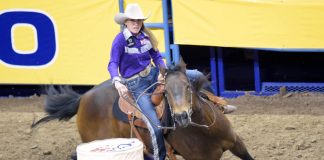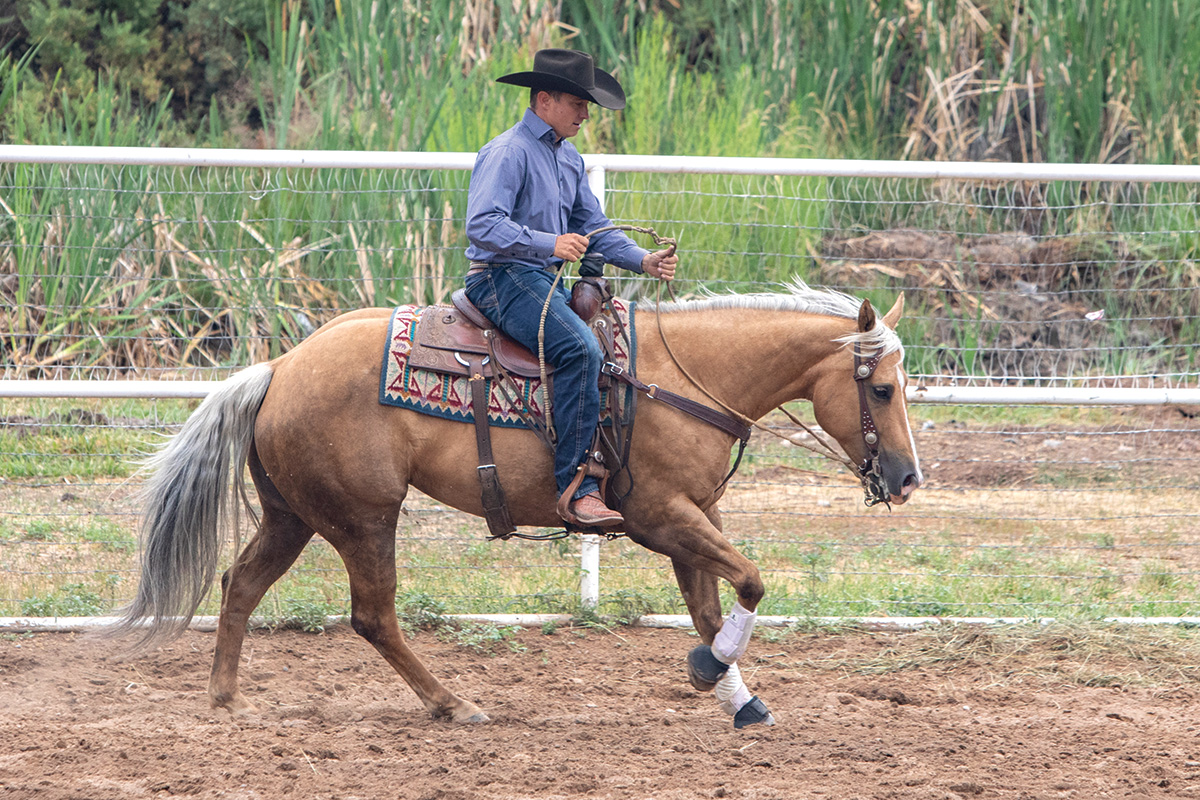
In reining or working cow horse competitions, you’ll need to show that your horse can change leads on command while keeping a steady loping cadence. To score well in these western classes, you’ll need to perform lead changes as you lope to the center of the arena. Your body position will tell your horse when to pick up the opposite lead.
To make this move smooth in the show pen, you’ll practice anywhere except the center of the arena during practice. He’ll also help you practice the counter-canter so that your horse waits for your direction before changing leads or directions. Your cues and the location where you practice your changes will keep your horse listening instead of anticipating the switch.
“The perfect reining lead change is when you have to look twice to see if it actually happened,” Ralston says. “In a show, the judge wants to see an even cadence and the rhythm maintained. The horse’s head shouldn’t go up and his tail shouldn’t switch. His hip shouldn’t hop to get quickly into the new lead. The horse changes leads and continues on the same path as he came into the center of the arena.”
Getting the Lead Change
Before attempting a lead change, warm up your horse by working through the western gaits. Next, lope down the long centerline of the arena. Ralston suggests changing leads when you’re riding straight ahead, and not practicing continuously after loping circles at the center of the arena.
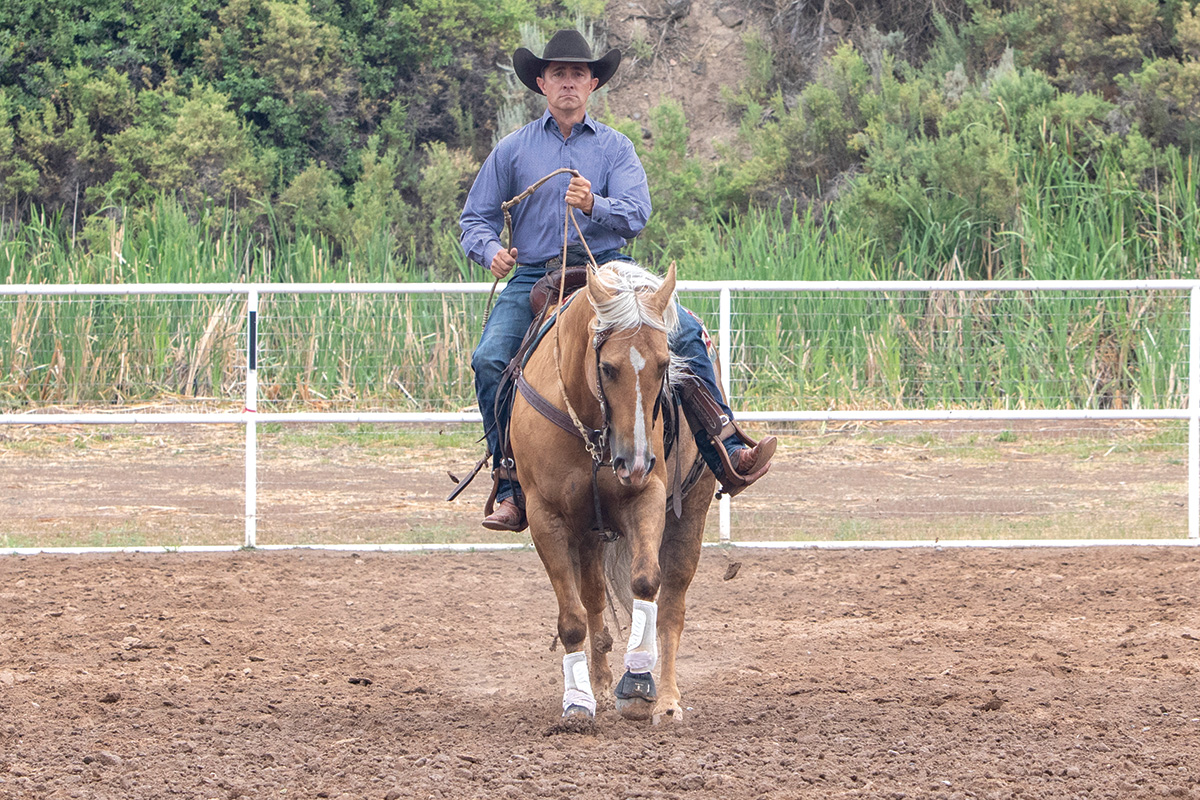
To get the longest line, ride straight through the middle of the arena or from one corner to another, creating a diagonal line. Give yourself space to cue your horse as he moves ahead five strides. “I establish a five-stride straight line in the middle of the arena,” Ralston says. “I want to get my horse balanced and straight first. I don’t want him leaning one way or the other. The first and second stride, I keep my legs in position to maintain a left lead. I change leads on stride three, then hold my legs in position for the new lead as I ride straight ahead for strides four and five.”
When it’s time to cue on stride three, Ralston shifts his weight—moving from one back pocket to the other—and allows his legs to move naturally in response to the shift.
“It’s the shift from one pocket to the other that presses one leg against the horse and releases the other,” he says. “Initially, my front leg will be by the front cinch to get the horse’s shoulder up and straight. When I weight my outside pocket, my leg will naturally move toward the back cinch. I rock back toward the outside hip so that I can drive the horse’s outside leg up through the inside front leg of the new lead.
“The whole time, my hand, chin, and eyes should point straight ahead,” Ralston continues. “That gives the horse the confidence to know where we’re going. The cue comes from the cadence and rhythm in my body and how my legs and my weighted pockets tell him to adjust his body.”
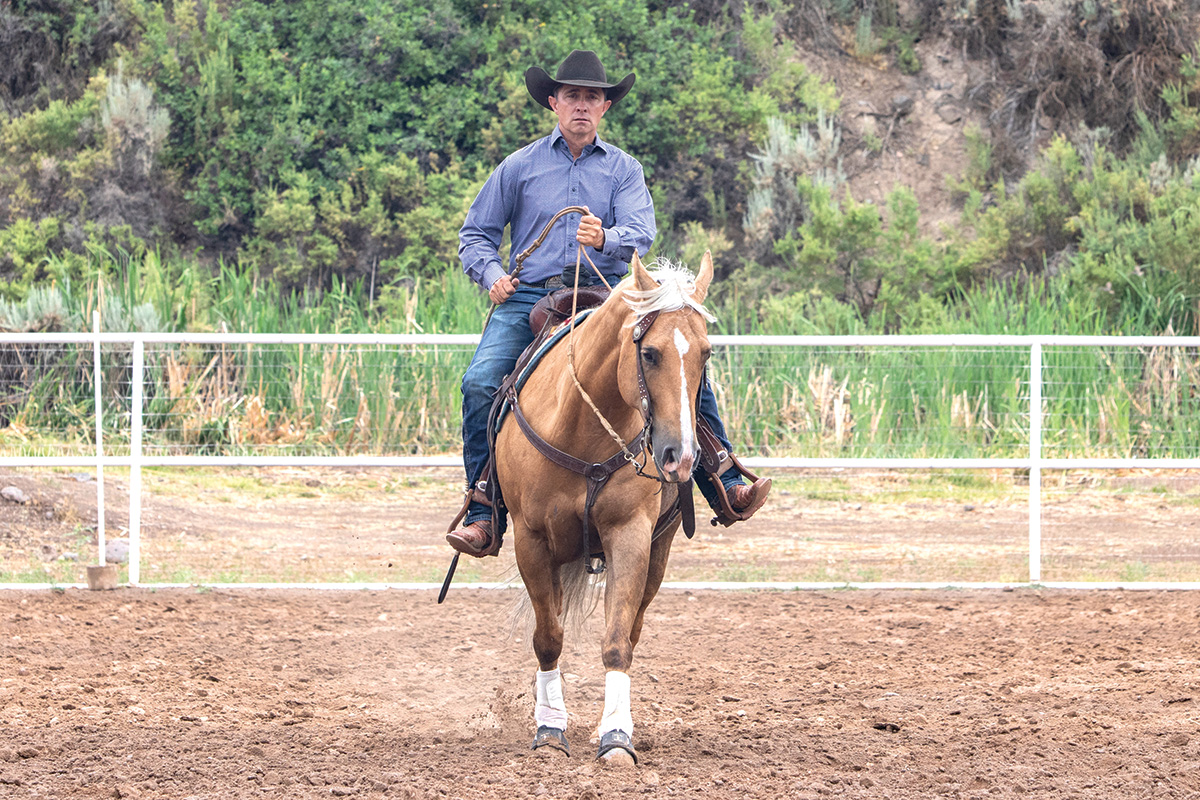
He reminds you not to move quickly or “jab” your horse for a lead change at a specific point.
“With the five-stride plan, you give him three strides of a window to figure out when he’s ready to change,” says Ralston. “When I release my leg and the other leg is coming, that tells the horse, ‘Find your lead change.’ I’m letting him find the right place.”
Ralston says that only after he has completed the five-stride change will he guide his horse to the left or right to turn by cuing with his reins. Then he will decide whether to round the corner and keep the horse on the correct lead, or to ride in a counter-canter (purposely moving in a circle with the horse’s leading leg on the outside).
Avoiding Anticipation of the Lead Change
Ralston says if you always change leads in the middle of the arena and then ride on the correct lead, your horse will quickly anticipate the change and the new direction.
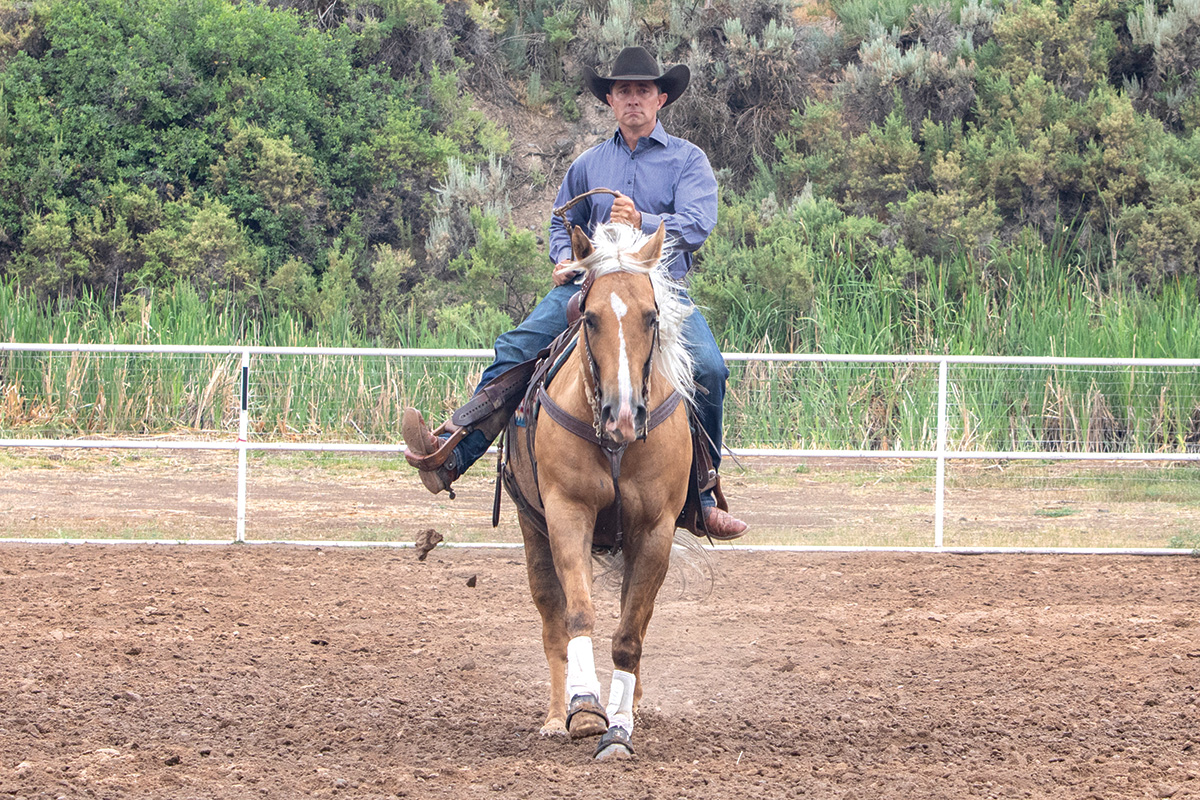
“The most important thing for me in lead changes is that a horse doesn’t associate changing leads with changing direction,” the western trainer says. “I rarely change leads by circling, then changing leads, and then circling in the other direction. Instead, I change leads somewhere on the long line, then I change directions at the short end of the arena and stay in a counter-canter.”
Why does it matter? If a horse begins to change directions into a new circle before he changes leads, he won’t move with balance. His shoulder will drop, and he’ll work hard to counter-balance his body.
“If the horse is mentally ahead of me and turns before I cue him, then his shoulders will lean to where he’s ready to go,” Ralston says. “If that shoulder is leaning, then I won’t be able to move his hip and change leads smoothly. I don’t want the association of changing directions with changing leads. Once I change the lead and establish that for a few strides, then I can change directions.”
Counter-Canter
Avoid your horse anticipating the new direction by riding him in a counter-canter often. Practice your five-stride lead change, ride straight at the end of the pattern, then direct him to the left or right. No matter what lead your horse is on, he should follow your direction cue without changing leads again.
“Before I go to a horse show, I will lope circles and then establish the five-stride pattern in the center,” Ralston says. “I’ll change leads, but after stride five, I continue in the counter-canter. I don’t change directions but follow the same loping circle I just completed. That’s high-level and difficult, but if that tool is established in the horse, then I’ll be able to keep my horse’s attention. If I don’t practice this way, my horse will think ‘change directions, change leads.’”
Ralston says you must keep your legs active to keep your horse working in the counter-canter.
“Once I change leads, my new leg comes on and establishes the new lead,” he says. “If I’m loping left to right, my left leg comes on and changes into the right lead. Then I balance the horse’s chin and keep my left leg on slightly and my hand directs him to a left circle, into the counter-canter. Keeping that leg on tells him not to change back into the left lead and to maintain his hip to the outside of his shoulders.”
If you practice your timing, allow your horse space to change his leads, and work your counter-canter, you’ll help your horse listen to every cue.
“This teaches him to be patient and only change leads when asked,” Ralston says.
Meet the TrainerTrainer Aaron Ralston works his horses on his family’s Collbran, Colo., cattle ranch and prepares them for world-class competition. He won Top 10 honors at the 2021 AQHA Versatility Ranch Horse World Show riding Blue Tucka Jo, a 2016 mare, in Open Junior Ranch Trail and the overall championship finals. Ralston also has championship titles in reining, cutting, working cowhorse, and calf roping, and earned gold for the United States reining team at the FEI World Equestrian Games. |
This article about perfecting your western lead change appeared in the June 2022 issue of Horse Illustrated magazine. Click here to subscribe!




